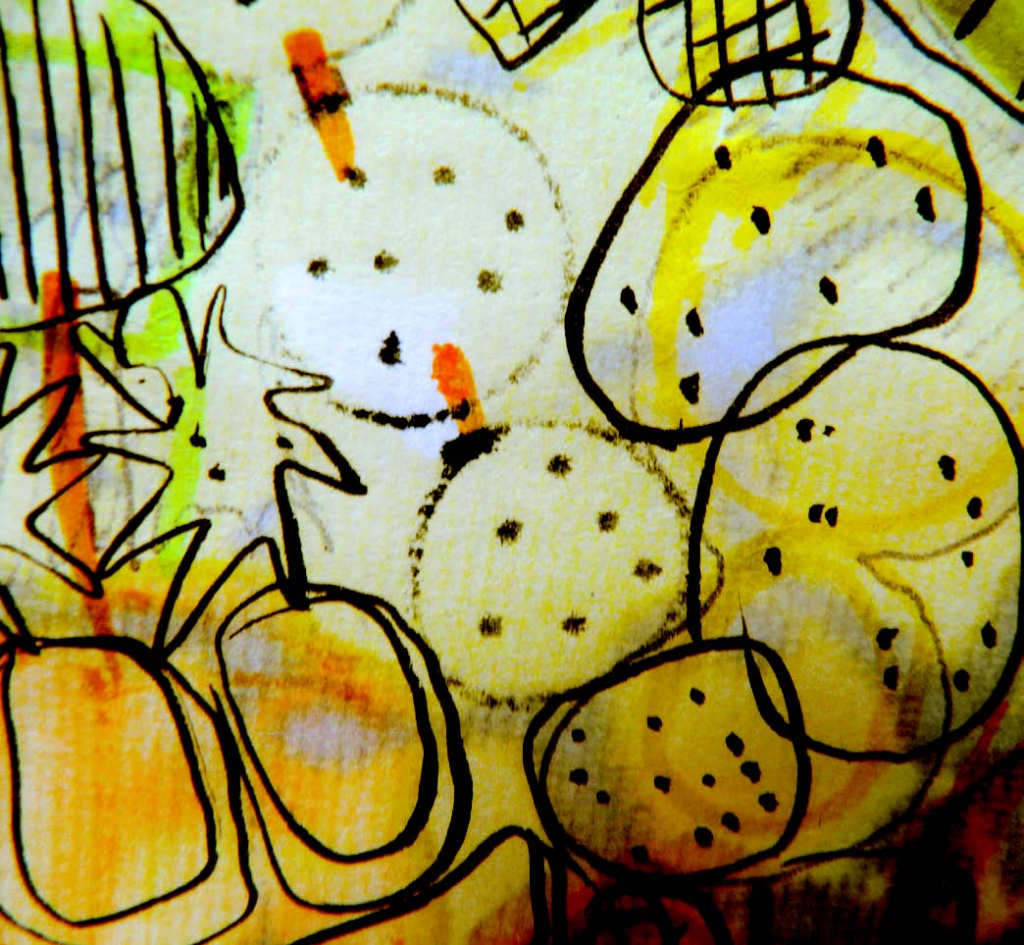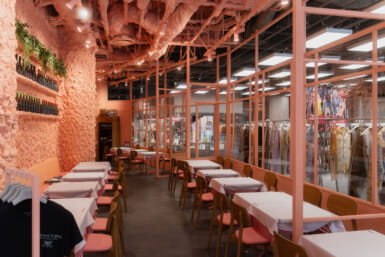Too much Jack Johnson and no English menu, but the thing I missed more than a native tongue was a camera: the décor of Two is superb. One approaches from a small side street and looks down upon a sunken floor from the glass windows butting the gravel. Porous slabs of pumice trickle from the door, leading to a crystal box where strings of small wooden boxes hang overhead, each emanating a patient orange orb. My left hand brushes bald, brick-shaped pine, each branded with kanji for tsu, from which the name ‘Two’ derives. With shoes removed, our soles trace crescents cleaved in the wooden floor before treading into the cushioned walkway in the glass-cased seating area. Against the timid light, smooth stone, and worn wood, the plasticky cushions we eventually settle upon seem misplaced, their wiped-clean surfaces perhaps suiting the incontinent better than the continental.
Still, we were without a Japanese speaker, and still we had no idea what the speciality was. Having passed Two before with New Yorker, he mentioned their serving udon. But now I realized that it was oden I heard him say, leaving the tiny squares of kanji on the menu unintelligible. Two tactics were devised: order what we want, and should that fail, point to the table of three next to us and ask for the same. The first try covered the basics: ‘Horse, yakitori, salad, and maguro’. One hit, three strikes, so when the tomato salad arrived, I played charades and flapped my limbs to request the rest.
I was not enamoured with the salad: too much mayonnaise and not enough leaves for it to cling to, while the name gives enough reason for prejudice. I was even less impressed when the oden appeared. This, it turns out, was what the other table had been enjoying. Either that or I am a poor actor. But they were Japanese and we soon discovered that the buds of an Austrian, a Frenchwoman, and an Englishman differ slightly. Indeed, were it not for the na
tty setting, I would not have put the food beyond that on offer in a kombini. A bowl of boiling water bubbled like an onsen, a dozen sticks of fruit, fungi, and fish scalded within. Beside this, a small keg of brown miso lay, with four troughs of toppings to complete each mouthful. You could do worse than imagine yakitori soup, except you do not drink the fluid; you chew the overcooked vegetables instead. It is the kind of simple, hot food that might suit a retirement home; perhaps the plastic seats are not so out of place after all.
After this damning first impression, I was delighted that delving further into the menu unveiled meat options far more palatable to my European brethren. I say meat; the first thing I ordered was actually medai sashimi, slices of snapper served so delicately it made me think of a softened pair of Cinderella’s shoes, as if drawn by Dali. But back to the meat: three options enticed and getting back to basics we ordered chicken, a sliced sirloin of beef, and pork. They each came on a small raft of strung-together bamboo that amused, but it was the inspired sprig of fir beneath that impressed most, opening the pork and beef like rosemary that had spent too much time in the gym. It was perfect with the spike of the yuzu paste and raw salt that puckered the mouth as juices flowed. It would have been too much were it not for the zousui—egg and rice soup—we had blindly ordered as well, creating some cushion for a chemist’s worth of sodium. But perhaps oden is still best left to those on medication.










